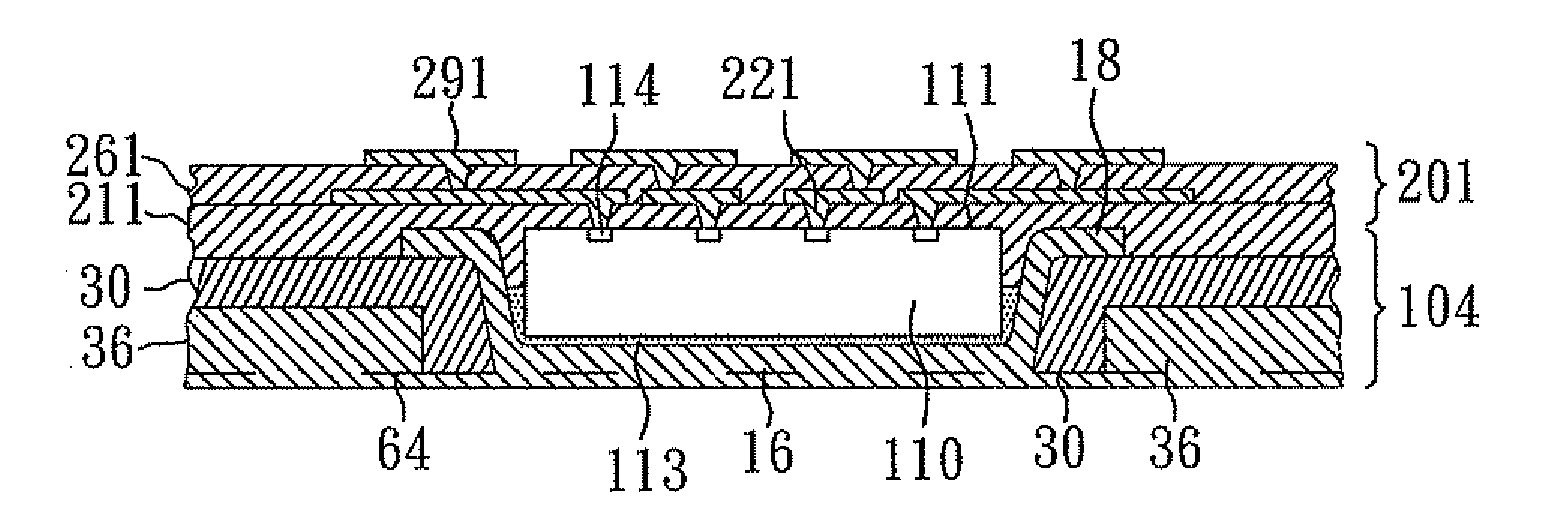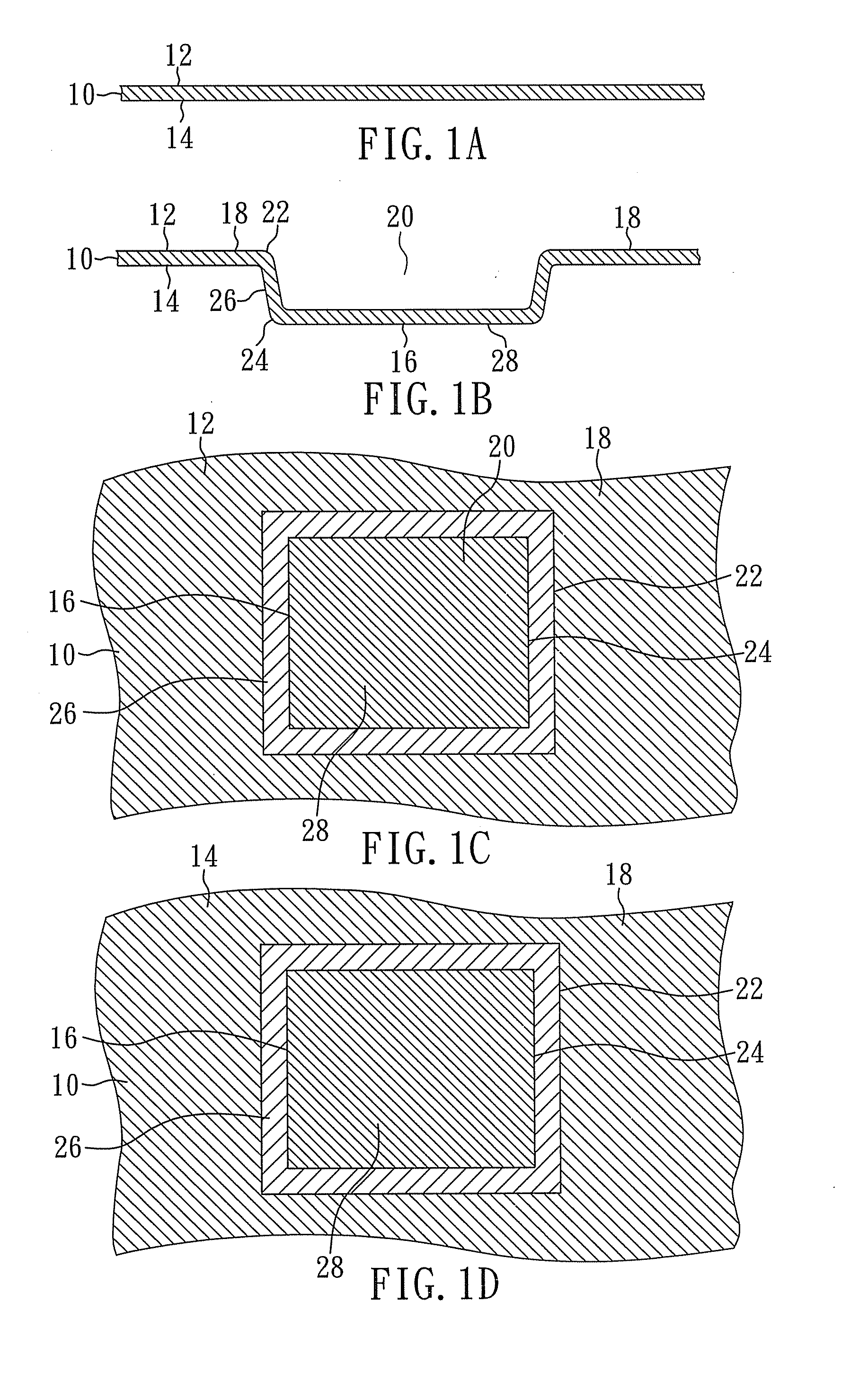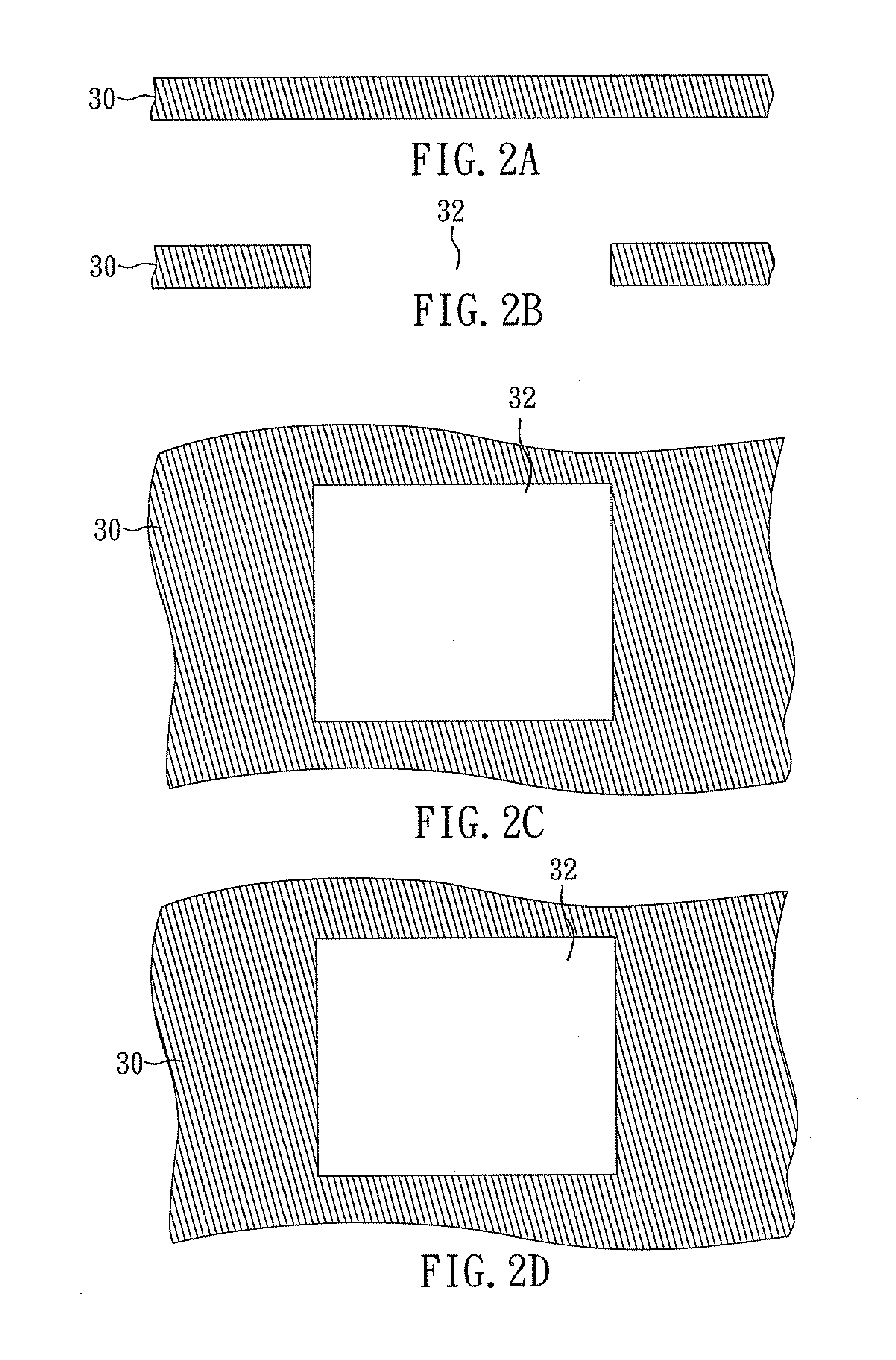Thermally enhanced semiconductor assembly with bump/base/flange heat spreader and build-up circuitry
a technology of heat spreader and semiconductor assembly, which is applied in the direction of circuit thermal arrangement, solid-state devices, basic electric elements, etc., can solve the problems of short life span, short life span, and immediate failure of semiconductor devices at high operating temperature, and achieve excellent heat spreading and heat dissipation, low cost, and low cost
- Summary
- Abstract
- Description
- Claims
- Application Information
AI Technical Summary
Benefits of technology
Problems solved by technology
Method used
Image
Examples
embodiment 1
[0048]FIGS. 1A and 1B are cross-sectional views showing a method of making a bump and a flange in accordance with an embodiment of the present invention, and FIGS. 1C and 1D are top and bottom views, respectively, corresponding to FIG. 1B.
[0049]FIG. 1A. is a cross-sectional view of metal plate 10 which includes opposing major surfaces 12 and 14. Metal plate 10 is illustrated as a copper plate with a thickness of 100 microns. Copper has high thermal conductivity, good flexibility and low cost. Metal plate 10 can be various metals such as copper, aluminum, alloy 42, iron, nickel, silver, gold, combinations thereof, and alloys thereof.
[0050]FIGS. 1B, 1C and 1D are cross-sectional, top and bottom views, respectively, of metal plate 10 with bump 16, flange 18 and cavity 20. Bump 16 and cavity 20 are formed by mechanically stamping metal plate 10. Thus, bump 16 is a stamped portion of metal plate 10 and flange 18 is an unstamped portion of metal plate 10.
[0051]Bump 16 is adjacent to and i...
embodiment 2
[0108]FIG. 6 is a cross-sectional view showing a semiconductor assembly that includes a thermal board with a substrate where first dielectric layer 211 is spaced from cavity 20 in accordance with another embodiment of the present invention.
[0109]In this embodiment, the semiconductor assembly is manufactured in a manner similar to that illustrated in Embodiment 1, except that die attach 113 fills the remaining space in cavity 20. As a result, die attach 113 fills the gap between bump 16 and semiconductor chip 110, and first dielectric layer 211 is deposited over the semiconductor chip top surface 111 (i.e. active surface), and contacts contact pads 114, die attach 113 and flange 18, but does not contact bump 16 and does not extend into cavity 20. For purposes of brevity, any description of thermal board 101 and build-up circuitry 201 is incorporated herein insofar as the same is applicable, and the same description need not be repeated. Likewise, elements of the thermal board and bui...
embodiment 3
[0110]FIG. 7 is a cross-sectional view showing a semiconductor assembly that includes a thermal board with a substrate where first conductive traces 241 are spaced from flange 18 in accordance with yet another embodiment of the present invention.
[0111]In this embodiment, the semiconductor assembly is manufactured in a manner similar to that illustrated in Embodiment 1, except that flange 18 is not exposed by first via openings 221, first conductive traces 241 do not extend to flange 18, and thus no electrical connection for flange 18 is provided. For purposes of brevity, any description of thermal board 101 and build-up circuitry 201 is incorporated herein insofar as the same is applicable, and the same description need not be repeated. Likewise, elements of the thermal board and build-up circuitry similar to those in thermal board 101 and build-up circuitry 201 have corresponding reference numerals.
PUM
 Login to View More
Login to View More Abstract
Description
Claims
Application Information
 Login to View More
Login to View More - R&D
- Intellectual Property
- Life Sciences
- Materials
- Tech Scout
- Unparalleled Data Quality
- Higher Quality Content
- 60% Fewer Hallucinations
Browse by: Latest US Patents, China's latest patents, Technical Efficacy Thesaurus, Application Domain, Technology Topic, Popular Technical Reports.
© 2025 PatSnap. All rights reserved.Legal|Privacy policy|Modern Slavery Act Transparency Statement|Sitemap|About US| Contact US: help@patsnap.com



